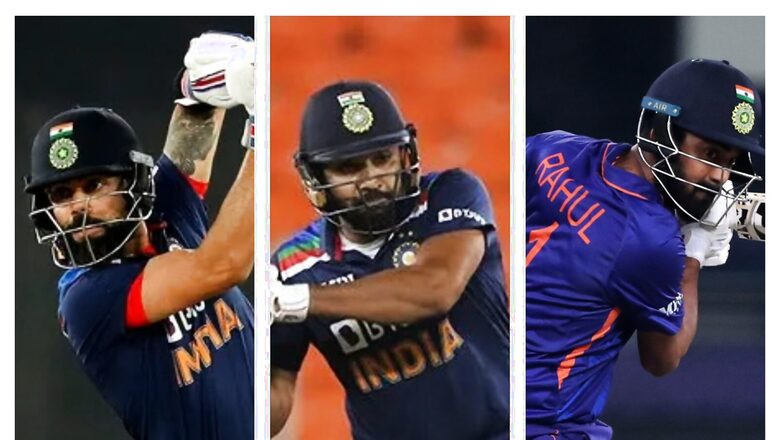
views
You can whisper in the safety of your living room, or you can scream from the rooftops. You can acknowledge that there is a cause for concern, or you can dismiss it as one of those things that happen in limited-overs cricket. But there is no running away from the fact that twice in the last months, India’s top order has been blown away by left-arm pace and, with due respect to the two protagonists, not necessarily of the highest order.
Historically, India’s batsmen across generations have had issues against the still somewhat novel angle of left-arm over. Be it England’s John Lever as far back as in the mid-1970s when then Indian captain Bishan Bedi accused him of using Vaseline to gain unfair advantage, or the likes of Australians Bruce Reid and Mike Whitney, or later Sri Lankans Chaminda Vaas, Chanaka Welegedara and Thilan Thushara, Australian Mitchell Starc, Bangladeshi Mustafizur Rahman and the Pakistani duo of Mohammad Amir and Shaheen Shah Afridi, Kiwis Trent Boult and Neil Wagner or even the strapping South African Marco Jansen, who took 19 wickets in three matches in his maiden foray into Test cricket this year, these are men who have had significant success against the Indian batting. And we are not even talking about the peerless Wasim Akram, the Sultan of Swing who made the tall talk and do his bidding like an obedient, conspiring compatriot.
These fallibilities have only sometimes publicly been endorsed; by and large, think-tanks have over the years tended to dwell not too much on it. That’s pretty much the case now too, when England’s Reece Topley and West Indian Obed McCoy reopened old wounds with six-wicket hauls in a One-Day International and a Twenty20 International respectively.
Even in isolation, these are slightly unsettling developments. When one takes into consideration the fact that Afridi destroyed India in his opening burst at the last T20 World Cup in the UAE when he fired out Rohit Sharma and KL Rahul, or that Boult was equally incisive in India’s next game against New Zealand, and there are the contours of a pattern that wouldn’t have been lost either on skipper Rohit or head coach Rahul Dravid.
A crammed three and a half months in the 20-over format lie in front of the Indian team, starting with the Asia Cup in the UAE later this month. India will play at least five matches in the continental bash (six if they reach the final), and three T20Is each against Australia and South Africa at home before they emplane for Australia, where they will seek to win their first ICC title since 2013 at the second T20 World Cup in as many years. It is inevitable, given the fields, that they will run into some of their recent tormentors and therefore that they need to have game plans in place so that there is no recurrence of potentially debilitating meltdowns, either against the ball slanted across the right-hand batsman or the one that ducks back in without warning, a facet that Afridi and Boult, at the very least, are masters of.
It’s notable that much of India’s travails have been in the limited-overs formats, where the white Kookaburra doesn’t swing for more than four or five overs, at the most. It’s also worth recalling that several of the right-hand batsmen have been dismissed bowled or leg-before, falling victims to the ball ducking back in and being unable to adjust in time to having taken their front foot across and outside the off-stump and thereby being forced to play around their front pad.
“Let’s face it, the batters need to turn the tables on the left-arm seamers and try and see how to get on top of them," agrees WV Raman, the man who has worn many influential hats in Indian cricket, the latest being that of the head coach of the women’s team.
“There is a tactical, technical issue. Especially in white-ball cricket, not many of the left-armers tend to bowl very straight. Generally, the best of bowlers bowl to predominantly off-side fields, so the batters are attuned to moving across the stumps and playing the ball. After all, line is mandatory in limited-overs cricket whereas length is optional," Raman said.
“Therefore, the batters are reasonably committed to moving across, reaching out and playing the ball. When you are up against left-arm pacers, that set movement has become second nature, where your leading (left, in case of the right-hand batter) leg goes across. Suddenly, when you see the ball come back in, you are forced to play around your pad," adds the former India opener, a left-handed batsman of no little merit.
“Once you have gone across, the lower body is going in one way and when the ball comes in, the upper body has to rotate to get the bat across," he added.
Raman, who has also coached Tamil Nadu and Bengal at the senior domestic level and the India Under-19 team in the past, points out that sometimes, playing around the pad is an involuntary offshoot of a technical set-up, too.
“Generally, batters of today have a tendency to grip the bat very tightly with the bottom hand," he explains.
“That forces them to indulge in the horizontal movement of the shoulders, which means that the bat comes down from almost third slip, which is why they tend to play more towards mid-wicket when the ball is angled into them. Those who have a vertical movement of the shoulders don’t have too many issues because in the worst-case scenario, their bat comes down from first slip, which means they are showing more of the bat-face to the bowler. When the bat comes down in an arc from third slip, hardly any face of the bat is towards the bowler," the former Women’s coach said.
Having identified the factors that might be contributing to a vulnerability against the ball coming in, the coach in Raman has solutions to offer as well.
CWG 2022 – FULL COVERAGE | IN-DEPTH | INDIA FOCUS | OFF THE FIELD | IN PHOTOS | MEDAL TALLY
“One of the more obvious ploys will be for the left leg to go straight down the track, that will help negotiate any deviation. In that scenario, the shoulders won’t turn horizontally across the axis. That movement will facilitate the shoulder leaning into the line of the ball, which will give you a better chance of negotiating the ball coming in. If that was good enough for Sachin Tendulkar, then it should be good enough for everyone else," he chuckles.
Especially towards the later stages of his career, Tendulkar would ask the throwdown specialist to bowl straight at him so that he could repeatedly practice taking his left leg down the track and strengthen his muscle memory. “The movement of the left hip is very important," Raman chimes in.
“If the left leg goes across, then it shuts down the body to the line of the ball unless it is outside the off-stump. The left hip has to be the guiding light. If to every ball, the left leg goes only one way, which is across the stumps, there’s a problem.
“I’d have expected them to have sorted this issue out by now," Raman remarks, pointing out that within the Indian coaching set-up is a left-handed throwdown specialist (Sri Lankan Nuwan Seneviratne) too.
“It’s a case of the core group sitting down and working it out. The boys are experienced enough to analyse things on their own, in any case. They have the right resources, simulation, you name it. With a left-arm throwdown specialist, constrained coaching should have come into play a long time back. Take a leaf out of Tendulkar’s book, I say. Play more balls bowled on the legs, play straighter, take the left foot down the track. That’s what successful batters of different generations have always maintained. In fact, the great GR Vishwanath once told me that the best way to avoid locking the body will be for the front leg to come down the pitch, not being dragged across outside off," the former India player said.
Having a left-hander in the top three might help, though that is no guarantee for success. The advantage for a left-hander is that if the left-arm pacer bowls from over the stumps, he will get to see more of the ball for longer, the ball and the bowler will be in his eyeline as he takes his stance, which is a basic advantage unavailable to the right-hand batsman.
Eventually, it is about getting into good positions so that the batsman isn’t mentally committed to only the balls slanted across or only the ones swinging back in. Sometimes, a little bit of positive intent will help, too, facilitated by clarity so far as footwork and positions are concerned. After all, it’s a matter of just a few overs before the Kookaburra stops deviating off the straight. A show of aggression, even if it is to step out just once or twice early in the over, walking towards the bowler, might put him off his length. Once a bowler pulls his length back, swing is pretty much ruled out. Additionally, the chances of a batsman getting bowled or being trapped leg before drop drastically.
Having said all this, there isn’t one methodology which will work for everyone. By the end of the T20I series against West Indies, McCoy was going for plenty of runs, his six-wicket haul in game two a distant memory. At the end of the day, it’s about each batsman figuring out what works best for him in a particular scenario. India have the pedigree, the experience and the nous to do so, no matter if the weight of history is bearing down on them somewhat heavily.
Get the latest Cricket News, Schedule and Cricket Live Scores here

















Comments
0 comment